It's time to buy a new graphics card when you want to enjoy the latest games as the developers intended. Upgrading to a dedicated GPU means you can experience cutting edge visuals and the raw speed that comes with modern AMD, NVIDIA and Intel graphics cards.
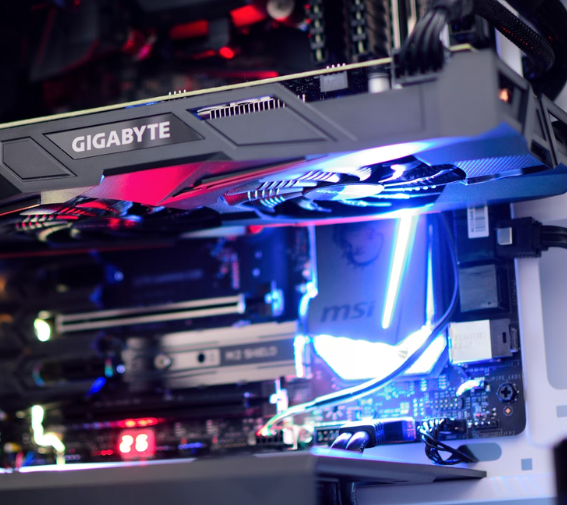
For the first time buyer, the huge range of graphics cards can be a little overwhelming. Do you need Ray Tracing? Do you need DLSS? What if you just want to play Esports games? This guide will help you decide which GPu is right for you, and what the differences are between entry level and high-end GPUs from AMD and NVIDIA. Whatever games you want to play, there's a suitable graphics card just for you.

With every new generation of graphics card, improvements are made to the architecture, software and specification for the newest developments in game design. As the scale of new games increases and visuals become more realistic or demanding, the technology in modern graphics cards needs to adapt and meet the needs of both the developer and the gamer. From one generation to the next we see the differences in performance, from framerates to visual quality using Ray Tracing technology. The specifications, however, can be confusing to those who don't have any technical knowledge of the hardware.
What to look for in a GPU
While it used to be normal practice to compare the number of teraflops and CUDA cores in graphics cards, the only true comparison is when benchmarking two graphics cards using the same game with the same supporting hardware. This is where you can compare framerates and visual quality at high resolutions, and check generational improvements such as DLSS and Ray Tracing.
Example: At release, the RTX 2080 was a very popular graphics card with gamers and even data scientists, with incredible performance in 1440p (and some 4K) gaming, and when used in deep learning scenarios. The card was superseded by the RTX 3080, which improved performance in all areas. Most notably, when we compare the framerate benchmark for both cards, we see the RTX 3080 performs at almost double the framerate (depending on the game).
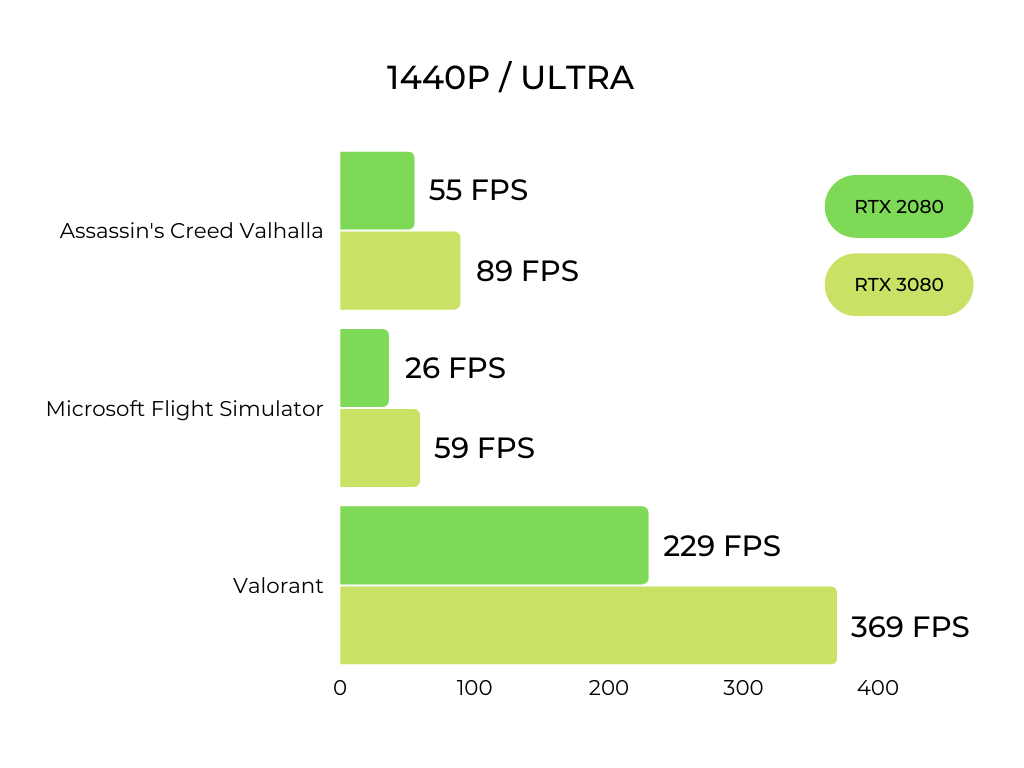
The RTX 2080 was released in 2018, and the above games were made in 2020. Whilst developers often optimise games for graphics cards that are two to five years old (to ensure they appeal to as much of their fanbase as possible), the RTX 2080 is no match for the gaming improvements in the RTX 3080. In tech terms, the RTX 2080 uses Turing architecture, while the RTX 3080 uses Ampere technology, meaning faster Ray Tracing calculations, faster memory, and higher Tensor Core count (smoother visuals/less noise using DLSS), so the hardware changes are many.
Again, the easiest way to tell the difference in specifications is by checking like for like benchmarks in your favourite games. If you are technically minded, the specs may be enough - but for the rest of us, simply Googling your favourite game and checking gaming benchmarks on YouTube is much easier.
DLSS (Deep Learning Super Sampling) is another feature in modern GPUs, and in reality this technology is quite simple. DLSS uses hardware that is not dedicated to regular graphics rendering, so it will not use the same resources. In practice, DLSS basically renders a game at low resolution, then 'upscales' it to a higher resolution. Each game has its own DLSS parameters and uses algorithms intelligently to avoid draining resources. Mostly used in 2K and 4K gaming, but also useful for 1440p gamers.
AMD's FSR (FidelityFX Super Resolution) technology, though later to the party than DLSS, is another version of upscaling, and supports less games than NVIDIA, but comes close in benchmarks in terms of performance.
An important factor in choosing a new GPU is ensuring your current motherboard and hardware is compatible. it is also important to consider that whilst you may have the ability to install your graphics card, you may not achieve best results with older motherboard technology.
PCI Express
The ubiquitous PCIe interface is available in modern motherboards, regardless of form factor (mITX to ATX). All graphics cards specifications will tell you the PCIe compatibility, which is a major factor in your purchase decision. PCI Express 4.0 x16 GPUs, for example will be suitable for motherboards using both PCIe 3.0 and PCIe 4.0, using 16 lanes for optimal data throughput. Importantly, though, PCIe 4.0 is twice as fast as PCIe 3.0. If your motherboard does not support the actual specification, you could consider upgrading your motherboard to match the GPU spec.
Bottlenecks
A bottleneck occurs when your CPU is unable to handle the amount of data sent by your GPU. To avoid bottlenecks, you can check your upgrade with calculators like PC Build's Bottleneck Calculator. You will see a comparison and recommended upgrade path if there is a bottleneck with your current hardware.
Size matters
Today's graphics cards can be pretty big. You will see the dimensions of the card in the specifications, so it is well worth checking the headroom in your case when you factor in the size of your CPU cooler and distance from the motherboard to the PSU shroud for example.
The length of modern GPUs also matters, as you may find it interferes with some of the cabling and headers on your motherboard.
Power (PSU)
It is essential that your current PSU can handle the new power requirements of the GPU upgrade. Generally speaking, the total power your new GPU uses should be no more than 40% of your PSU’s capacity. For example, if you have an 800W PSU and your graphics card uses 350W, you might want to upgrade your PSU for a 1000W.
It is also important to check you have the right connectors on your PSU. Every GPU specification will detail the connectors used (e.g. 2 x 8-pin PCIe). Don't be tempted to use adaptors if your PSU doesn't have the right connectors, as this is never recommended by experts. If you don't have the right connectors, upgrade the PSU for best results and safety.
For RTX 40 Series graphics cards, as much as 850W is required, so an ATX 3.0 PSU is recommended to supply the colossal new GPUs from NVIDIA.
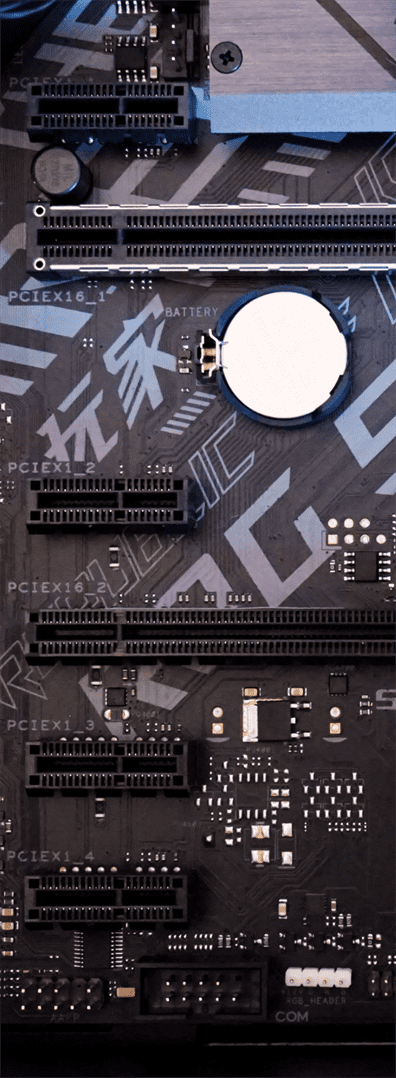
Choosing a PC often means knowing which GPU and processor is most suitable for your needs. Whether you are buying a PC for gaming, creative work, streaming or competitive Esports gaming, the choice of GPU is a large part of the decision. We have created buying guides to help you decide in each case.
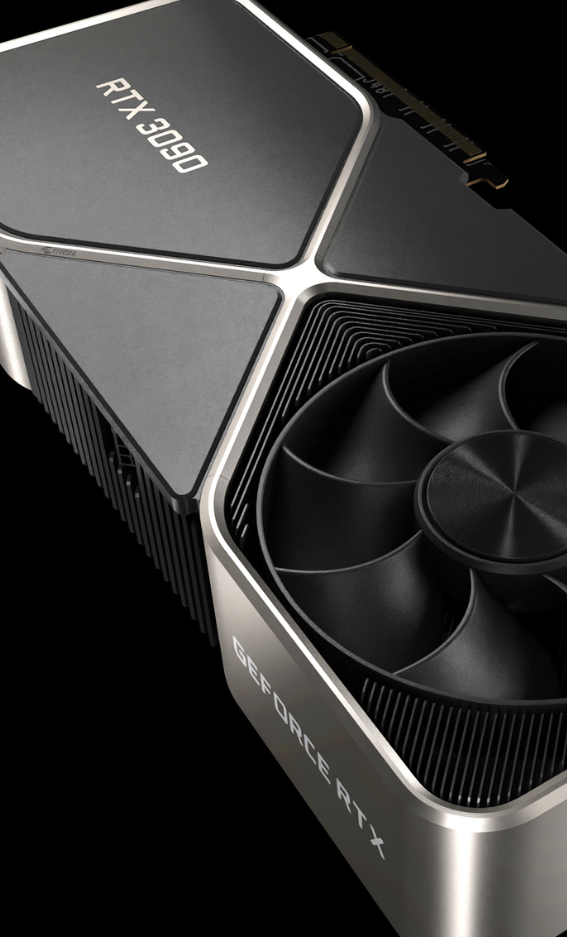
Depending on the type of games you play, a graphics card may not be required. For example, if you only play indie platform games and point and click adventures, you will never need the Ray Tracing or DLSS of a new graphics card, and an integrated graphics CPU will suffice. In the middle of the gaming landscape, if you demand the highest framerates in competitive Esports games, focusing less on graphics and more on detail, then a high performance graphics card and monitor is definitely what you need. For AAA gaming and playing the latest titles from big studios, or experiencing flight simulators in all their glory, a top spec NVIDIA RTX or AMD RX graphics card is a must.
The best way to decide what graphics card you need is to check the recommended requirements of a game on Steam or the official website. To experience the game as it is meant to be played, always go with recommended requirements, but if you're happy playing in lesser quality graphics, the minimum requirements will be fine.
Steam example:
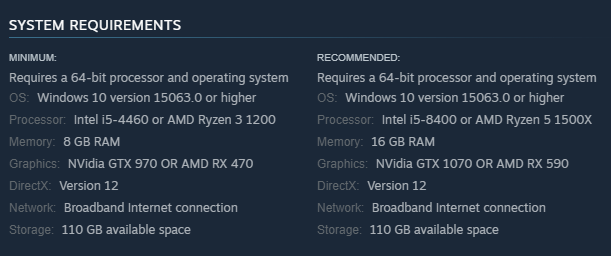
The ideal graphics card for you is going to be based on the type of games you play, as we've discussed. We've highlighted some examples below to help you decide on a GPU. When choosing between AMD or NVIDIA, this will quite often be on a game-to-game basis, as games arbitrarily run faster on AMD or NVIDIA in many cases, so a quick benchmark check will enable you to decide. Price often factors into this decision, though manufacturers are quite close on pricing. Don't forget: there are always great GPU deals to be found when a new generation is ready for launch, and quite often bargains can be found with clearance GPUs.

If you enjoy a variety of games, which often include AAA or demanding titles, then you should choose a GPU that is considered mid-tier or high-end.
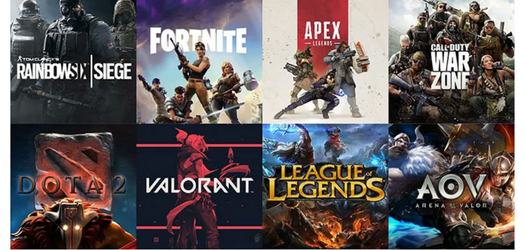
There are two distinctions with competitive gaming, casual and pro. For casual competitive gamers, a mid-tier graphics card will suffice, and allow you to experience decent visuals at high framerates. If you aspire to be a professional Esports player, then you need a reliable, powerful graphics card capable of maintaining high framerates, as well as potentially creating video content to share online and training. As most casual and pro Esports players will need the streaming capabilities of a graphics card, NVIDIA is the best choice for their encoding prowess.
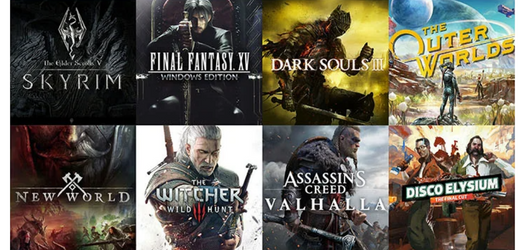
RPG games are a very interesting genre, as they often take place in rich and expansive worlds, or have open world mechanics to explore. They are also very story-driven, and therefore the visuals invariably matter to fans of the RPG genre. As such, high end graphics cards are often recommended for new RPGs - though mid-tier is acceptable for older, popular titles.

When only the best graphics and framerates will do, AAA gamers choose high-end graphics cards that allow them to explore vast, beautifully presented open worlds, and experience realistic lighting, shadows and game design at the bleeding edge of development capabilities. For Ray Tracing, NVIDIA has the lead, but there are occasions where AMD offers better performance in other aspects of a game if lighting & reflections are not that important to you.

Yes. We offer various finance options, with flexible payments depending on the price of the GPU.